THE INTERIOR DESIGN
BUSINESS HANDBOOK
THE INTERIOR DESIGN BUSINESS HANDBOOK A Complete Guide To Profitability
Third Edition
Mary V. Knackstedt, FAS I D, F I I DA
This book is printed on acid-free paper.
Copyright 2002 by Mary V. Knackstedt. All rights reserved.
Published by John Wiley & Sons, Inc., New York.
Published simultaneously in Canada.
No part of this publication may be reproduced, stored in a retrieval system or transmitted in any form or by any means, electronic, mechanical, photocopying, recording, scanning or otherwise, except as permitted under Sections 107 or 108 of the 1976 United States Copyright Act, without either the prior written permission of the Publisher, or authorization through payment of the appropriate per-copy fee to the Copyright Clearance Center, 222 Rosewood Drive, Danvers, MA 01923, (978) 750-8400, fax (978) 750-4744. Requests to the Publisher for permission should be addressed to the Permissions Department, John Wiley & Sons, Inc., 605 Third Avenue, New York, NY 10158-0012, (212) 850-6011, fax (212) 850-6008, E-Mail: PERMREQ @ WILEY.COM. This publication is designed to provide accurate and authoritative information in regard to the subject matter covered. It is sold with the understanding that the publisher is not engaged in rendering professional services. If professional advice or other expert assistance is required, the services of a competent professional person should be sought.
Library of Congress Cataloging-in-Publication Data:
Knackstedt, Mary V.
Interior design business handbook : a complete guide to profitability / Mary V.
Knackstedt, with Laura J. Haney. 3rd ed.
p. cm.
Includes bibliographical references and index.
ISBN 0-471-41232-5 (cloth: alk. paper)
1. Interior decoration firmsUnited StatesManagementHandbooks, manuals, etc. 2. Interior decorationUnited StatesMarketingHandbooks, manuals, etc. I. Haney, Laura J. II. Title.
NK2002 .K57 2001
729 .068dc21 2001026894
Printed in the United States of America.
This book is dedicated to designers, especially to those who
call me with questions or to share information.
Together, we can continue to raise the standards for the field of
interior design and to increase our ability to serve our clients.
Contents
Preface ix
Acknowledgments xiii
Finding Your Place In Interior Design
Starting a Business
Planning For Profit and Growth
Setting Up a Design Studio
Developing a Team of Staff and Consultants
Marketing and Selling
Succeeding in Project Management
Charging For Your Services
Working With Sources and Contractors
Managing Your Office
Mastering Financial Management
Growing as a Professional
Recommended Reading
Design Schools
Index
Preface
W hen we use the right procedures, the business portion of our organization can beautifully complement the creative process. As interior designers, we deal with business issues every day. We engage in business development when we seek new clients. We deal with finance every time we handle money. We sign contracts and letters of agreement, address personnel problems, and seek out new re-sources. We cope with masses of paperwork, including writing specifications and placing orders. Often we do these tasks without the background and advisors available to many other kinds of professionals.
To stay in business, we have to understand business. We dont have to earn business degrees or be personally capable of performing every business function, from accounting to devising retirement plans, but we do have to be able to talk with and understand the people who are specialists in these fields. To pull our weight as members of financial planning teams and to help our firms end the year with a profit, we cannot afford to wear blinders to financial matters.
Though business procedures are taught in design schools, they are not taught as extensively as they should be; the courses are usually scheduled for one se-mester or a year. Business procedures are the basis of communication that we will use throughout our professional years. We must relate to other industries, including the financial and legal entities that are part of the business world. If handled properly, these relationships can ease and complement our own work practices. Moreover, a good basic understanding of specific business functions is necessary for everyone, not just the person running the design company. Staff members or anyone participating in the company, no matter in what capacity, will benefit from a good understanding of business practices.
Other professions establish strong liaison and group activities through which they share their business practices and solutions to common problems. The in-terior design profession needs to do the same. We can learn from each other; and by learning from each other, we can strengthen our individual firms and create a stronger and better-understood profession.
Awareness is the key. Just as we continue to learn about design throughout our lifetime, we need to keep current with other issues that affect the interior design field. Everything that affects business in general affects the interior design busi-ness. When insurance rates go up, or certain types of insurance become un-available, we may have to modify the way we do business. The state of the stock market, the price of oil, and the value of real estate affects our clients attitudes  to buying design services; therefore, they affect our interior design businesses.
to buying design services; therefore, they affect our interior design businesses.
x Interior Design Business Handbook
Its a chain reaction: If we are not operating our firms profitably, we all loseour clients, because we dont have the same quality of interest in a job that is losing money; our staff and resources, because we dont have the funds to promptly meet our obligations. Consequently, we may not be able to attract the caliber of projects we enjoy working on and find most financially profitable.
When designers are comfortable dealing with money and with all the finan-cial issues of our business, it gives us a tremendous sense of freedom and pro-vides a good environment for creativity.
The Interior Design Business Handbook is written primarily for practicing in-terior designerswhether working independently or within large firms. It covers the full range of business activities and procedures for the life of a practicefrom choosing a location and running a business on a daily basis to selling it when its time to retire. It is also useful to students and as a training manual for support-staff members. It defines business procedures that work for interior design firms all over the country. Its a book to refer to just before a meeting with business advisors. You may also want to give a copy to your bookkeeper or accountant so they better understand our field.
This third edition of the Interior Design Business Handbook addresses many new issues not included in previous editions. My first book, Interior Design for Profit was a very simple text. Since then, however, our work has become more complex, and each edition of the book was progressively more extensive. Still, I was surprised at the number of changes that needed to be made in this edition. Banking, other financial issues, and many general procedures have changed sig-nificantly. Technology has been part of that change. We are also dealing more on an international basis. Even as I finish this book, I realize that I would like to keep going, as there are so many more subjects that I would like to present. But if I included everything I would like, the book would be so large it would be difficult to carry. Thus, it became necessary to address only the most important issues.


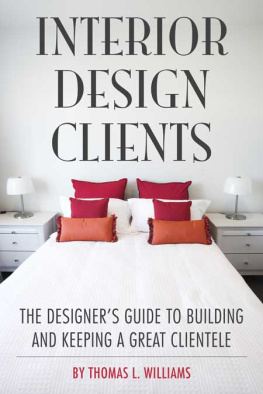

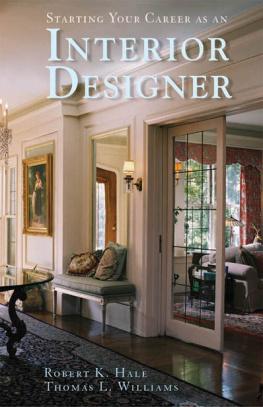

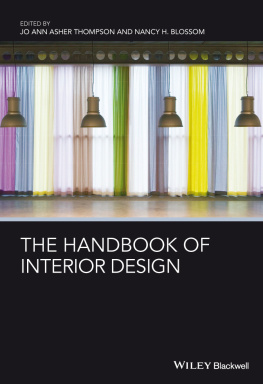
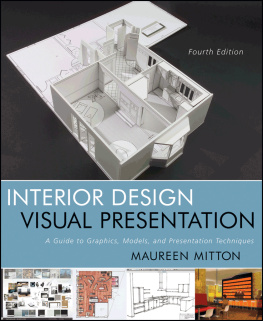
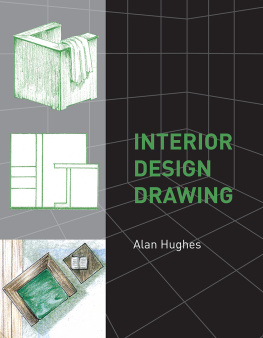



 to buying design services; therefore, they affect our interior design businesses.
to buying design services; therefore, they affect our interior design businesses.